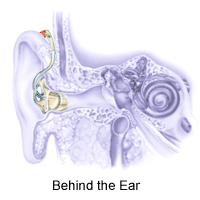CIC – Completely In the Canal Digital Hearing Aids |
|
These are custom made digital hearing aids that can assist people with mild to severe hearing loss depending on the size and shape of your ear canal. These are very tiny and sit at the outer end of the ear canal and are practically invisible. They carry very small sized batteries hence you must have good manual dexterity and good eyesight to operate. Some of these aids come with a remote control.
|
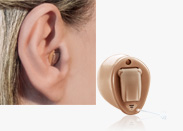
|
|
MC – Mini Canal Digital Hearing Aids |
|
These are custom made digital hearing aids which are bigger in size than the CIC. They are suitable for mild to moderate hearing loss depending on the size and suitability of the ear canal. They can have either a volume control or a program button on the hearing aid and can come with a remote control.
|
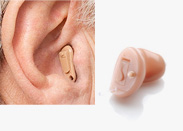
|
|
ITC – In The Canal Digital Hearing Aids
|
|
These are custom made digital self-contained units that are fitted in the ear canal. They are suitable for people with mild to moderately-severe hearing loss. Ear canal size and shape is a determining factor. These aids are bit bigger than the MC and can have volume control and program buttons with directional microphone on the hearing aids or can have an optional remote control.
|
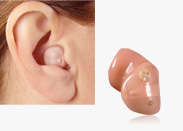
|
|
ITE – In The Ear Digital Hearing Aids |
|
These are custom-made, self-contained units that fill the concha area (contour) of the ear. They are suitable for mild to severe hearing loss. They are bigger than the ITC and have all the controls functions on the hearing aid itself. You can also get these aids with an optional remote control. They may have bigger batteries than the ITC aids and are easier to handle and manage.
|

|
|
BTE – Behind The Ear Digital Hearing Aids
|
|
These are digital hearing aid units that can sit snugly behind the ears. They can be fitted to people having mild to profound hearing loss. The size of the hearing aid depends on the power of the aids. The more power, the larger the size of the aid. These aids are easier to handle and manage, especially for people with poor dexterity and eyesight. They are also more robust and less prone to occlusion problems and repairs. They can come with all the function switches on the hearing aid and also have an optional remote control. They come in a variety of different coloured cases.
|
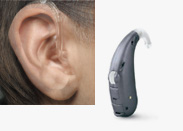
|
|
Open Slim Tube Digital BTE Aids
|
|
These are smaller digital hearing aids that sit behind the ear and are virtually invisible as the sound is transmitted to the ear canal via a thin transparent tube. They are suitable for mild to severe hearing loss and useful for people with low frequency normal or near normal hearing and high frequency hearing loss. They can also come with remote controls.
|
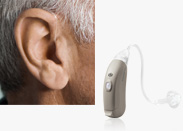
|
|
Spectacle (Eyeglass) Hearing Aids
|
(These hearing aids are currently not available in Australia)
|
|
Eyeglass hearing aids are classified as:
- Bone conduction eyeglass hearing aids
- Air conduction eyeglass hearing aids
In Bone conduction aids the amplifier circuit transforms captured sounds into vibrations. A vibrator positioned at the far end of the temple transmits the vibrations to the mastoid bone, and then on to the cochlea. This type of hearing aid is suitable for conductive hypoacusis or mixed type of hearing losses, or in cases when it is physically impossible to use an air conduction eyeglass hearing aid (otitis media, otosclerosis, radical mastoidectomy, otorrhea, stenosis of the canal etc.) Bone conduction eyeglass hearing aids do not require anything in the ear (no tubes, no ear moulds, no shells), and are perfectly hidden in the temple of the eyeglasses.
Air conduction eyeglasses capture sounds that reach the tympanic membrane through a custom built ear mould, connected to the temple and fitted in the ear canal. This aid is suitable for fitting even profound hearing losses.
|
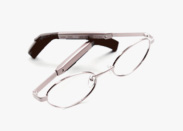
|
|
Receiver in the Canal/Receiver in the Ear (RIC/RITE)
|
|
These are new generation of hearing aids with the placement of receiver in the ear canal. These aids cosmetically have a much slimmer look and a thin wire takes the sound to the receiver in the ear canal. The advantages are the sound in close to the tympanic membrane without losing any of its acoustic features and its cosmetic appeal. They come with different size (power) and length receivers which makes it ideal for fitting from mild to profound hearing losses with proper custom moulds.
|
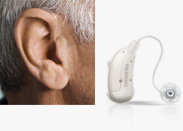
|


